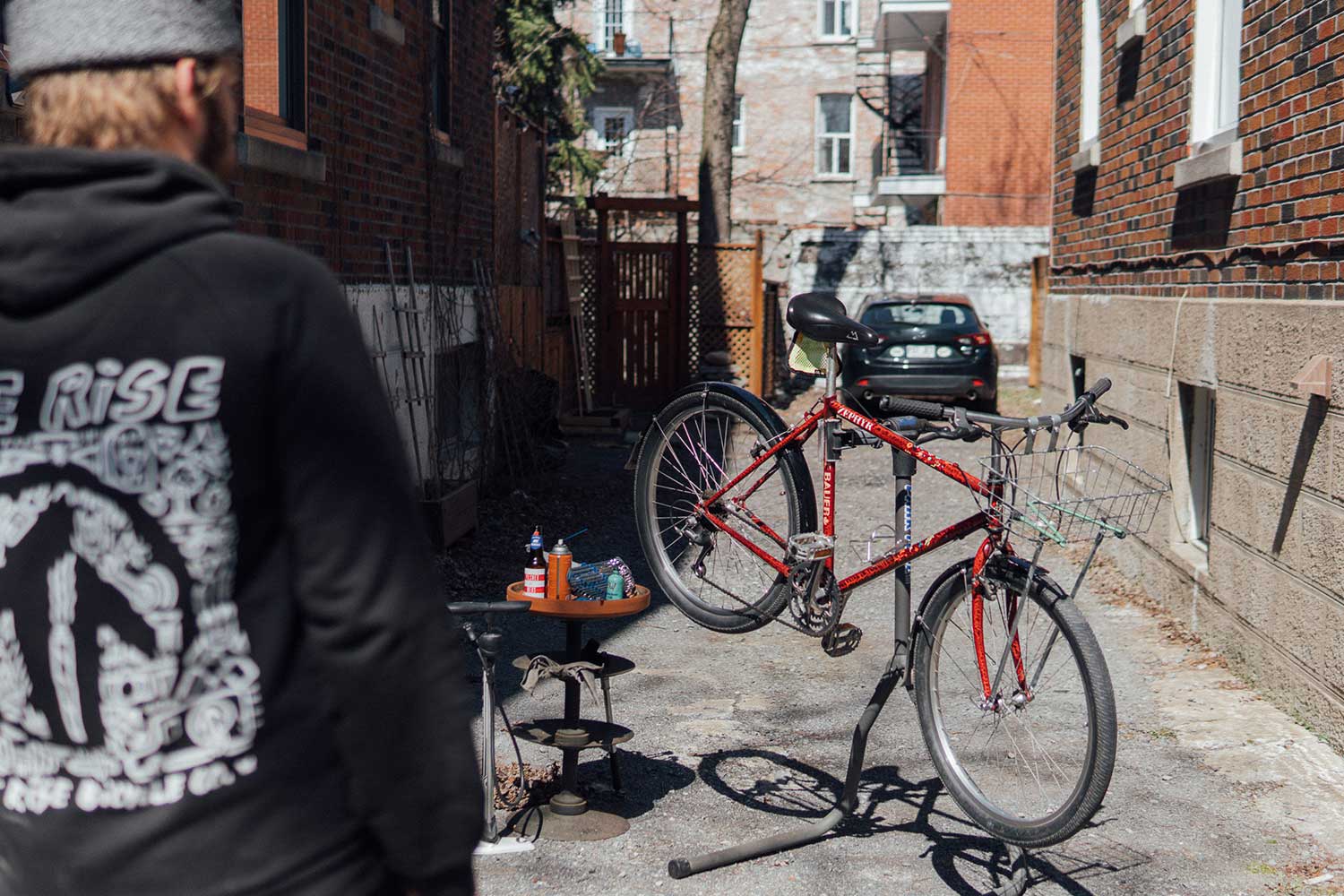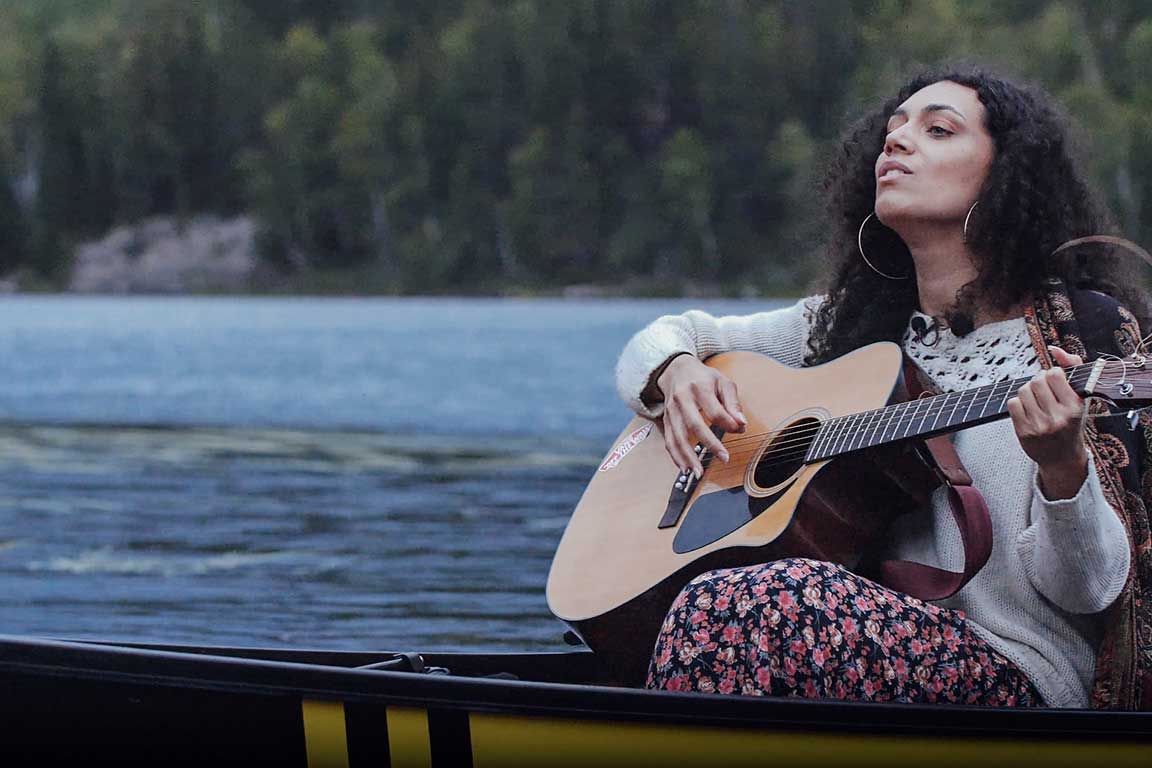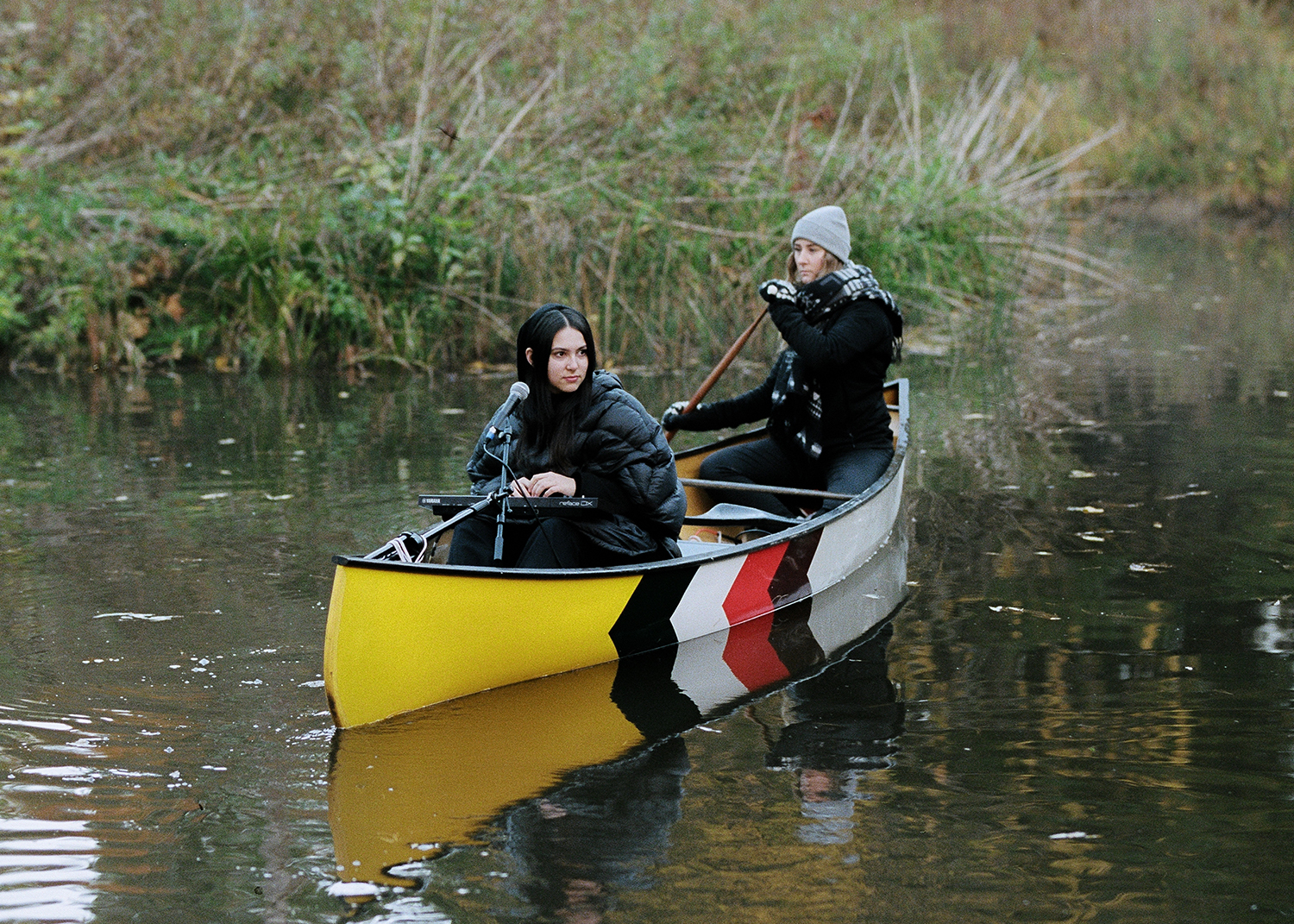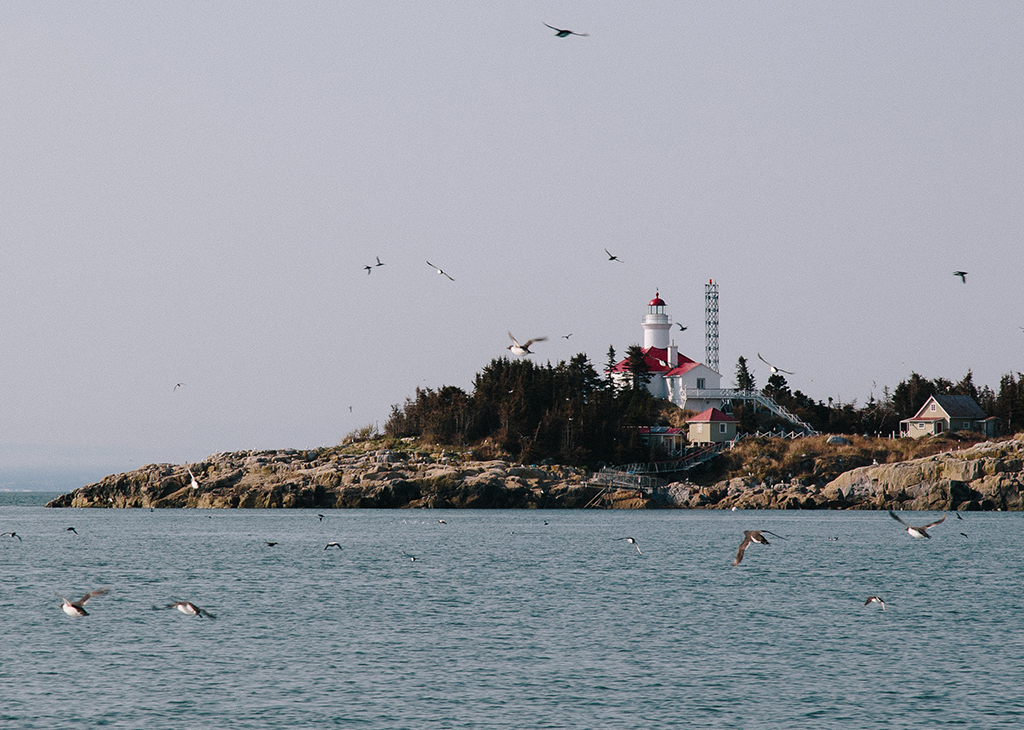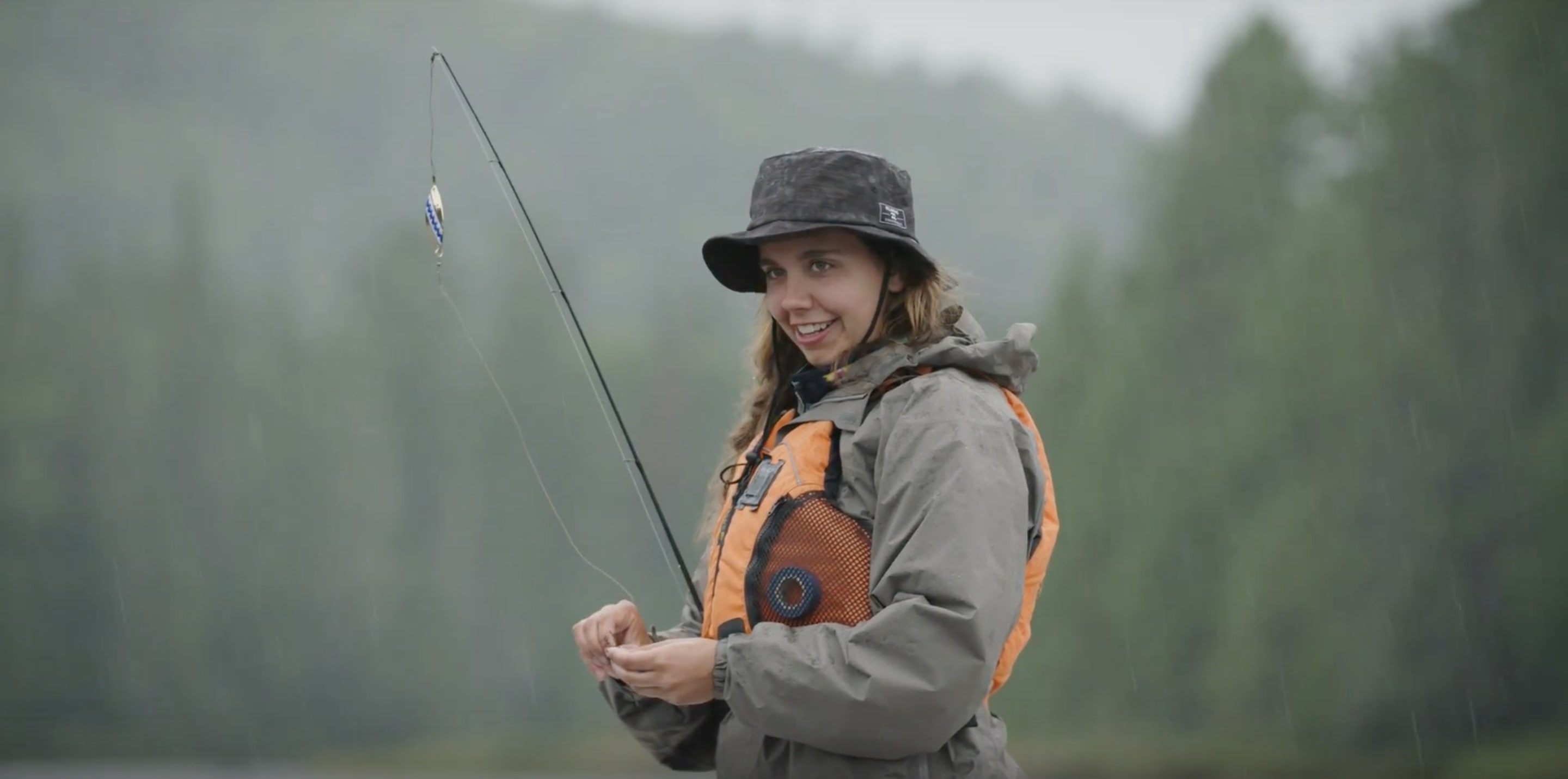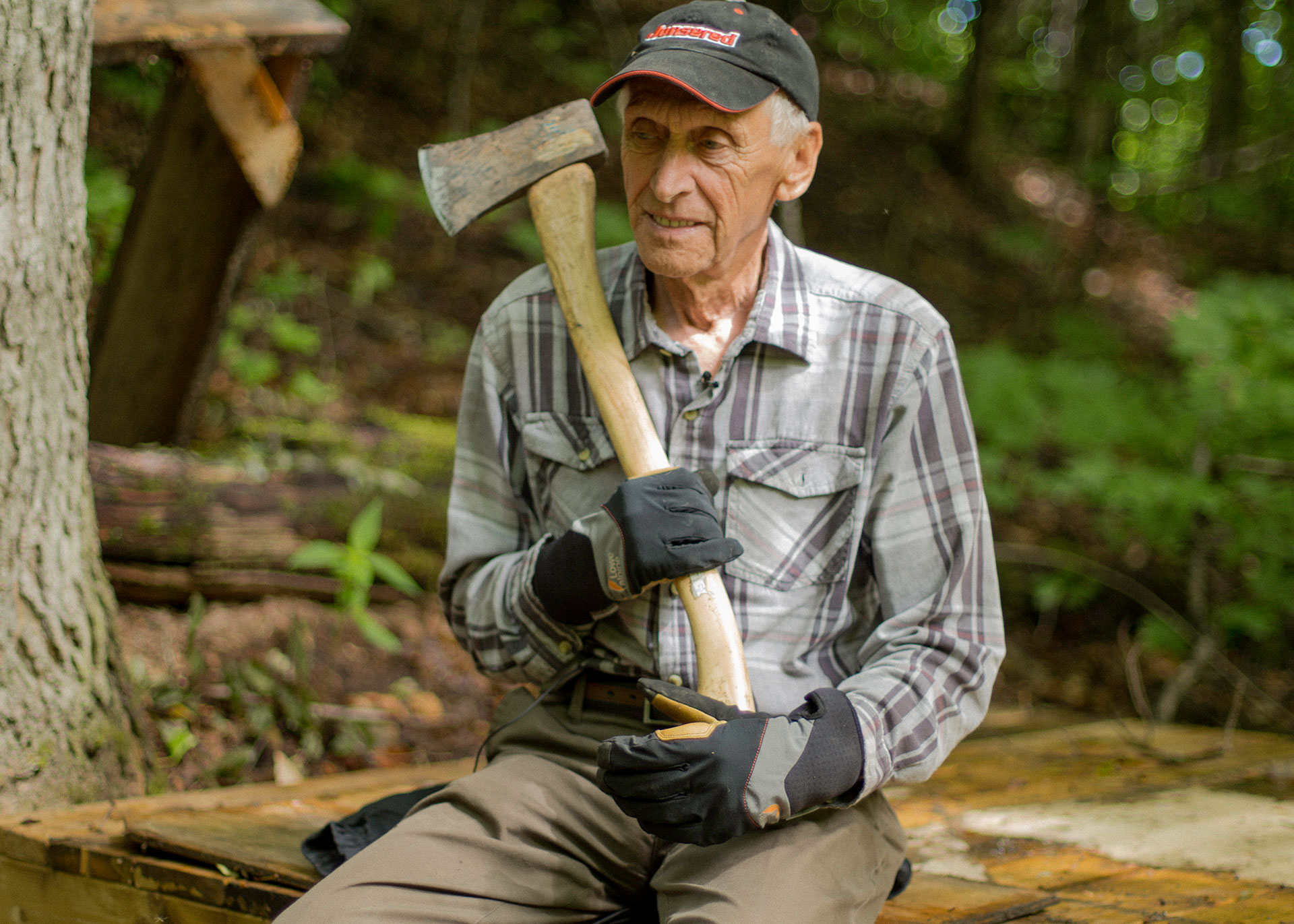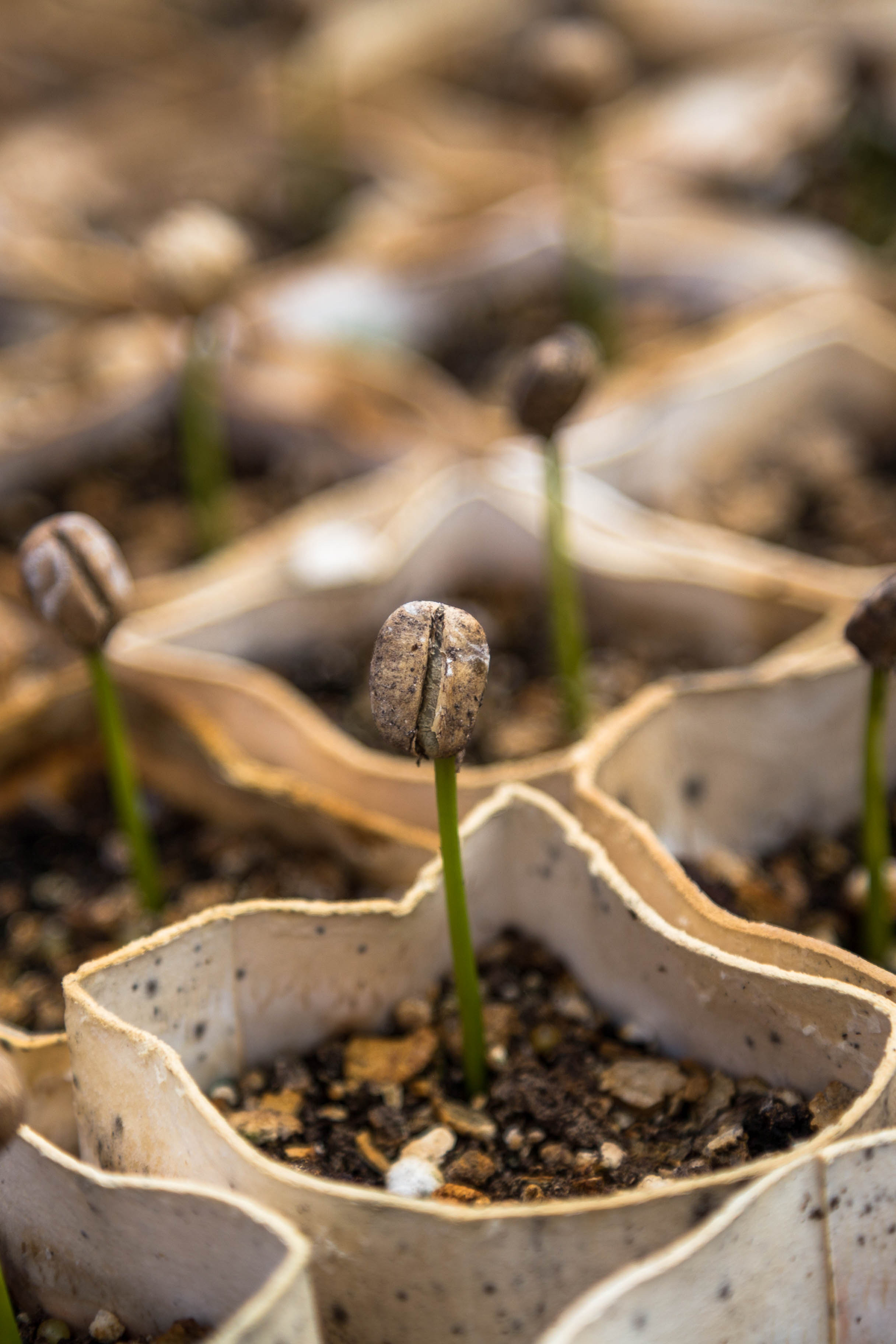100 Wild Islands
A grassroots movement to save 7000 acres of land on the coasts of Nova Scotia.
The islands
The biodiversity
- 7,000 acres of land (the surface of 3030 football fields).
- Stretching over 30 kilometers along the coast between Clam Harbour and Mushaboom Harbour.
- An archipelago of 282 islands (but only 100 are over an acre in size, hence their name).
- Containing every coastal ecosystem found on the Atlantic Coast of Nova Scotia, including coastal boreal rainforests.
- A refuge for more than 120 species of birds, from majestic eagles to seabird colonies.
- Essential stopover stations and feeding grounds for migratory birds.
- White-tailed deer swim between the islands to eat kelp off the beaches.
The human presence
- Until the arrival of settler colonialists, Mi’kmaq inhabitants had been harvesting the islands’ land and sea non-destructively for 10,000 years.
- For generations, fishermen have used the sheltered bays to brine and prepare their catches.
- Nowadays, Nova Scotians who own cabins on the islands spend time there with their families in the Summer, while kayakists & boat operators run ecotourism activities around the archipelago.
- Because mostly untouched, the islands offer significant coastal and forest ecosystem benchmarks for scientists to study.
The protection
- Nature Trust launched the 100 Wild Islands campaign in 2014.
- Since then, they have been able to protect 85% of the islands, in partnership with island owners and the Province of Nova Scotia.
- They have raised $7 million to fund the protection of the 100 Wild Islands, and heightened public awareness of the islands’ value locally and abroad.
- The next phase of the 100 Wild Islands Campaign is the long-term care and stewardship of the islands.
–
The backstory
Wild at Heart
How a grassroots movement saved Nova Scotia’s untamed islands.
By Mark Mann
Nova Scotia has more than 13,000 kilometres (8,077 miles) of crinkled coastline, but when people travel to Halifax to see the ocean, they invariably congregate along the stretch southwest of the city, toward the Bay of Fundy. The South Shore exerts an automatic pull on tourists who are already feeling the lure of the untamed sea, like pilgrims seeking proof of the planet’s ancient strength.
My parents moved to Halifax after I went away to university, and whenever I visited them, I’d always find a day to steal their car and disappear southward. I’d lurch down Ketch Harbour Road and pull over at Crystal Crescent Beach for an ill-advised lonely swim. After a suitable number of courage-mustering rituals, I’d hop-foot into the freezing water and let the waves strip the gravity out of my bones, now and then sensing the dangerous tug of the outbound current. Then I’d flop back into the car and drive over to Peggy’s Cove — still damp and be-hoodied — to watch tourists wrestle with their dumb wish to slip past the warning signs and out onto the black rocks, where every year one or two are snatched away by a rogue wave.
But the South Shore also offers a far less wild and rugged vision of the ocean: “Keep Out” signs at once-public access points, islands deforested to make space for resorts and private getaways, and new deposits of hardscape to protect valuable infrastructure and development from the rising sea. Though by no means spoiled, this span of coast has been slowly transformed over the last 20 years by increasing investment, which capitalizes on our desire to grab the land in a tight fist and lean out into the ocean’s wildness.

On a Less Beaten Path
If you leave Halifax in the other direction, however, it’s a completely different story. By some miracle, the Eastern Shore has largely evaded attention from tourists and even the rest of the province. Drive past the outskirts of Dartmouth and you’ll embark upon a sparsely populated stretch of sheltered coves and rocky headlands, all the way to Cape Breton. This overlooked region also harbours a secret treasure whose value is only now being uncovered: a dense collection of hundreds of islands that have remained mostly intact for 10,000 years. Now known as the 100 Wild Islands, this gorgeous and sometimes ferocious archipelago offers a rare vision of pristine nature at the intersection of land and sea. Though rough and forbidding from afar, a new wave of adventurers — including Yvon Chouinard, one of the 100 Wild Islands’ most ardent supporters — are discovering the incredible diversity and subtle beauty of this rare coastal territory.
Until 8 years ago, it was mostly just committed sea kayakers and those who could see the islands from their kitchen windows who ever gave them much thought. Then along came Paul Gauthier, a local boy who founded a Silicon Valley startup in the 1990s and came home a rich man. Looking to build a cottage in the area, he decided to protect some ecologically important properties while he was at it. Gauthier partnered with the Nature Trust of Nova Scotia and together they started poring over maps of the province. Finally they pointed to the 100 Wild Islands and said, “What about those?”
Gauthier funded some conservation scientists to go out and see what’s there. They came back raving. Nick Hill is an ecologist who made some of those early studies. “On first blush, it’s a pretty raggedy-ass assemblage,” he told me.
Most of us almost never encounter real wilderness. Usually, when we look at the natural world, we are actually looking at a response to the last time humans disturbed it.
But the 100 Wild Islands come by their battered, ramshackle appearance honestly, via 10 millennia of pounding from the Atlantic Ocean. Says Hill,
“This whole structure has been blowing down and renewing itself since the last ice age.”
Most of the trees on the islands are fated to be knocked over by a hurricane before they reach 100 — a short lifespan for a tree. Hill calls them “old process forests,” because they’ve been consuming and regenerating themselves without interruption since before recorded history. All that time, these forests have been building up layers of moss, liverwort, and humus, all the way down to the upturned continental plate that formed the islands in the first place. Along with the tree roots that intertwine throughout these rich layers, there are vast intricate networks of mycorrhizae, or fungal runners, which convey nutrients and information between the different flora. “Imagine the complexity of that system,” says Hill. “There’s a lot of organic story there.”

It’s not just the forests. The 100 Wild Islands contain every natural ecosystem found in Nova Scotia’s Atlantic coast: inland lakes, boreal forests, lagoons, salt marshes, crowberry barrens, bogs, wetlands, sand beaches, and wild rocky shore, all intact. These secluded habitats provide essential stopover stations and feeding grounds for migratory birds. Moving deeper into the water, the intertidal zone offers more layers of ecosystem complexity, such as eelgrass meadows and kelp forests that can be as productive and energetic as tropical rainforests. Because they are mostly untouched, each of these ecosystems offers a critical benchmark for scientists, by which they can measure the effects of human disturbance around the province and the world.
These and other discoveries captivated Gauthier and the Nature Trust, and they soon launched the 100 Wild Islands Project to buy as many of the islands as they could, or convince owners — including the provincial government — to protect their properties with conservation easements and other legal tools limiting the development of the islands in perpetuity. They were just in time: corporate developers had already started advancing east of Halifax, buying up islands and even installing preliminary infrastructure for a resort on one of the largest. The 2008 economic crash spiked that plan, and Gauthier and the Nature Trust were able to swoop in. With the help of a major fundraising push, they have protected over 85 per cent of the 100 Wild Islands, saving the archipelago from the destructive fate that is elsewhere so much in evidence.
Living Off the Land
Although the wider world failed to take notice of the islands until recently, the local people have made good use of them for a very long time. On a visit to the islands in October, I met Brian Murphy, whose great-great-great-grandfather moved to what is now called Murphy’s Cove in 1756. Today, Murphy and his wife operate a picturesque campsite on the property.
I hopped into Murphy’s traditional wooden lobster-fishing boat, and he steered us out to a secluded inlet called Lobster Cove, where two small cabins perched on a sheet of rock next to the clear water: a cozy spot, with plenty of room for drying salt cod. The earliest settlers built cabins like these in sheltered bays here and there across the islands, so that if ever the wind wasn’t strong enough to carry them easily back to shore, they could brine and prepare the catch out there. Although the cod fishery suffered a devastating collapse and a moratorium was imposed in 1992, many local people continue to make their living from the ocean harvest. The main catch now is lobster, and it’s doing better than ever.
The lobster fishermen and -women along the Eastern Shore have played a central role in the grassroots movement to protect the 100 Wild Islands, but the attitude to conservation hasn’t always been so warm. In the 1970s, the local population fought hard to prevent their little homeland from being converted to a national park, which would have protected the islands but obliterated their way of life. More recently the community has come together to ward off another threat to their way of life: salmon pen farming, which is destructive to the near-shore environment. With the dangers of development and industrial aquaculture so vividly at hand, the Nature Trust found the local people were ready to lend their support to conserving the 100 Wild Islands, so long as they could continue using the islands and fishing the waters.
We rolled up to another island, and Murphy cut the motor and handed out fishing rods. Within minutes, I was yanking a mackerel up over the side of the boat. It gaped at me as I seized its thin, silvery body in a tight fist and extricated the bloody hook from its cheek. Instinctively, I threw it back in the water.
Murphy seemed confused by my decision to release a perfectly good fish. He would have happily brought that mackerel home for his supper. Other common near-shore fish include pollock, small cod, flounder, and perch, and they all have their place on the dinner table, not to mention mussels pried from the rocks, or clams scooped from the sand. It’s not just seafood, either. The berries are picked for desserts or preserves, while the white-tailed deer — which swim between the islands even in winter to eat kelp off the beaches — and seafaring ducks are hunted in season.

Taking Steps Forward With Cues From the Past
The presence of rubber-booted hunters nearby carrying long guns raises the question of whether the wildness of the islands has really been preserved. Can humans ever participate in a natural system? For those who seek to protect the islands, it’s about cultivating relationships to the islands that work with their natural processes. That includes local people continuing their traditional relationship to the land, as well as kayakers paddling out to the far side of the islands to camp. To be sure, the Nature Trust employs volunteer Property Guardians to monitor the islands, so that no damaging human intervention goes unnoticed.
“To me, wild is that which humans don’t have control over,” says Martin Willison, a conservationist involved in the 100 Wild Islands Project and a scientific adviser to the Nova Scotia Nature Trust.. “If the whole world were under human control, it would not function. We’re not smart enough to set up systems that are intrinsically functional in the long term.”
Well, the Mi’kmaq did it. Driven from the Eastern Shore by its earliest colonizers, there are few traces of the original Indigenous inhabitants there now. But Daniel Paul, a Mi’kmaw elder and historian, tells me that his ancestors were brilliant seafarers and would have used the offshore islands often. The original inhabitants of the Maritimes, the Mi’kmaq harvested what they needed from the land and sea non-destructively for 10,000 years.
“It was a responsibility to know that the way you treated the environment was assuring generations ahead of you to have a future.”
- Paul explained.
Maybe we’ll learn this approach again, but in the meantime, Willison has adopted a Noah’s Ark mentality about conservation. “Given that the likely trajectory for humans on this planet is that we will continue to eliminate species, reduce biodiversity, and consume landscapes, what we need to do is set aside enough so that at least there will be some remnants left in the future when humans ultimately behave in a sensible way,” he says. “From out of these protected islands will come the animals and plants which can repopulate the land. Basically, I see it as a survival strategy.”
Fortunately, this strategy includes people, whether they want to paddle amongst the seals and porpoises, pull lobster off the bottom to make a living, or simply gaze out at the tumultuous sea. For Bonnie Sutherland, this human-centred approach represents the second phase of the 100 Wild Islands Project. The first was keeping the islands safe from development (“We’re not done yet,” she reminds me; 15 per cent of the islands still remain unprotected). The next step is managing the way that humans relate to the islands, so the local population continues its traditional way of life, and even more people from Nova Scotia and farther afield are engaged and inspired by the islands. In short, that means ecotourism.
As it prepares for a fresh influx of wilderness enthusiasts, the Nature Trust is employing the same hands-on grassroots program it used to save the islands in the first place: lots of local consultations and community meetings, scientists on deck to continue inventorying the ecological features of the islands, and many studies to show where ecotourism is compatible and where it isn’t. It takes conscientious work to avoid causing inadvertent harm, but the root of the relationship and the best path to preservation is enjoyment. The 100 Wild Islands weren’t going to escape the world’s attention forever. Now the islands’ strongest protection is established when people fall in love with their rugged shores. It’s not hard.
The protagonists
Bonnie Sutherland
Executive Director, Nova Scotia Nature Trust
Bonnie is the Nova Scotia Nature Trust’s Executive Director; she’s the one behind the 100 Wild Islands conservation and protection project. Long before this campaign was launched, she had been a regular visitor to the area, silently contemplating it one paddle stroke at a time. Driven by her passion for the wilderness, Bonnie devotes her social awareness and environmental expertise to the mandates she carries out on a daily basis with her team.

“People wonder, if this area is protected, are we going to lose our traditional livelihood, our access to these places that have been part of our lifestyle? We had public meetings with local leaders from the fishing, ecotourism and business communities. We asked them, what do you want to see happen to these islands? What we heard was compatible with our initiative because we do not want to expropriate them or limit them, we want them to continue to enjoy theses islands as they always have.”
- Bonnie
Brian Murphy
Captain and campsite owner
In Murphy’s Cove, where his great-great-great-grandfather settled in 1765, Brian runs a picturesque campsite. Everyone knows him; the reason he’s received so many accolades since 1960 is likely because he knows how to make campers feel at home. Every night, he serves up his famous smoking mussels, cooked on campfire embers, in exchange for the best stories they have to tell — which he’ll share himself at the next gathering.


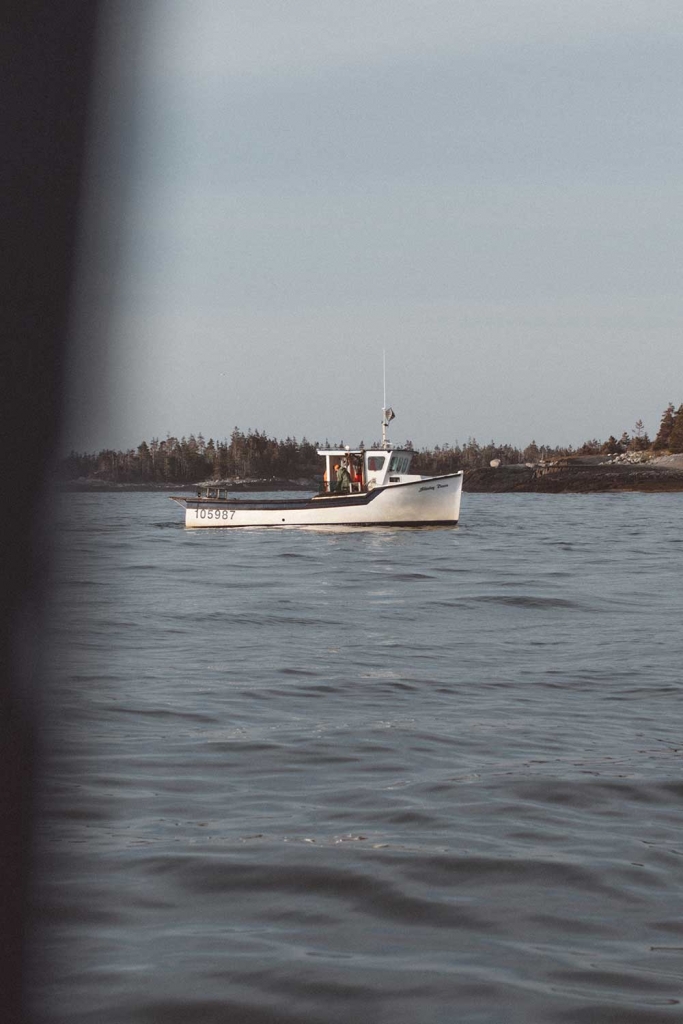
“I feel like a protector, this place is like family. We have our roots in these islands. All through my life I used to come out with my father. I learned to swim here like he’s learned to swim here. Now we come with our families, our friends, and we bring tourists out. I love sharing it.”
- Brian
Dr. Scott Cunningham
Biologist, author and kayaker
Scott makes his way along the coastal waters of Nova Scotia in a kayak like it’s his own backyard. In fact, he was the first to navigate around the Maritime province in 1980. Now, he shares his philosophy and know-how as an instructor and teacher. Coastal Adventures, the business he owns with his wife Gayle, is now in its 38th year of kayak tours around the 100 Wild Islands.
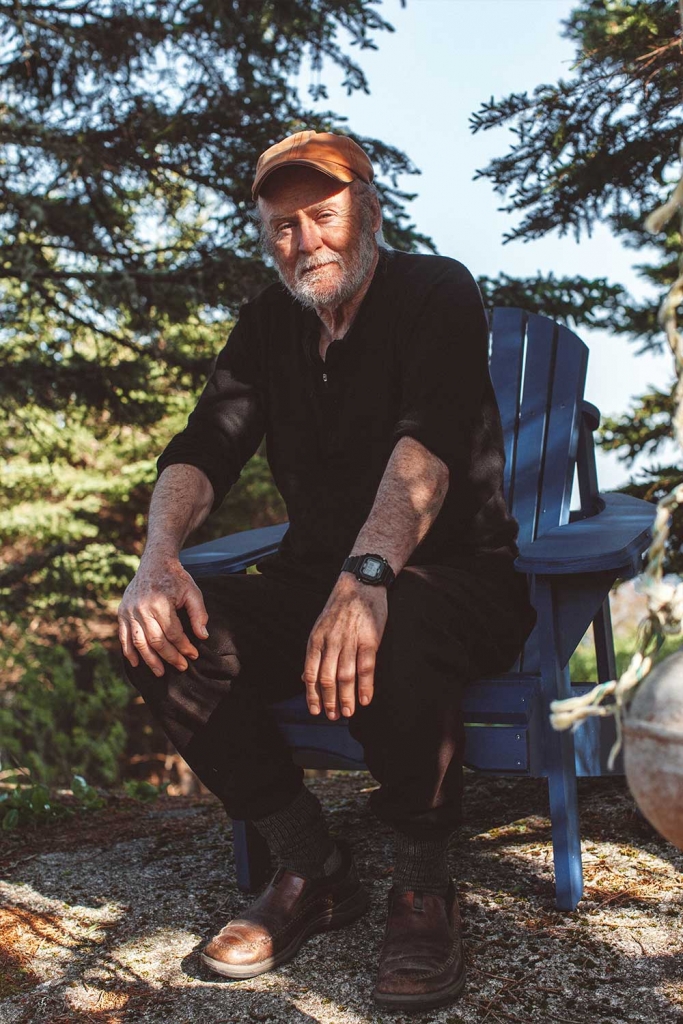

Jeannie et Mike Hubley
Lobster fishers
The Hubleys chose to make lobster fishing their livelihood. Drawing from the experience of the one and the resilience of the other, Mike and Jeannie hoist their traps season after season, despite the hazards caused by environmental regulations, the threat of salmon farms and accelerating climate change. They will do whatever it takes to protect the place where they live, and thus provide bread and butter and a prosperous future for their daughter.
“I’ve been lobster fishing for 38 years. I was 12 years old when I got my licence.”
- Mike


“Lobster fishing is the main employer in this area. There’s nothing else for us here. The salmon farms they want to put in would harm the area. They are not taking into consideration the damage they would do to the shore. These farms would wipe us out.”
- Jeannie
Barry Gerrard
Lobster fisher and fish merchant
In Popes Harbour, the respect fishers have for captain Barry is unquestionable, as becomes clear at the simple mention of his name. While at first glance the entrepreneur comes off as a tough guy, it doesn’t take long for his soft-hearted nature to surface.

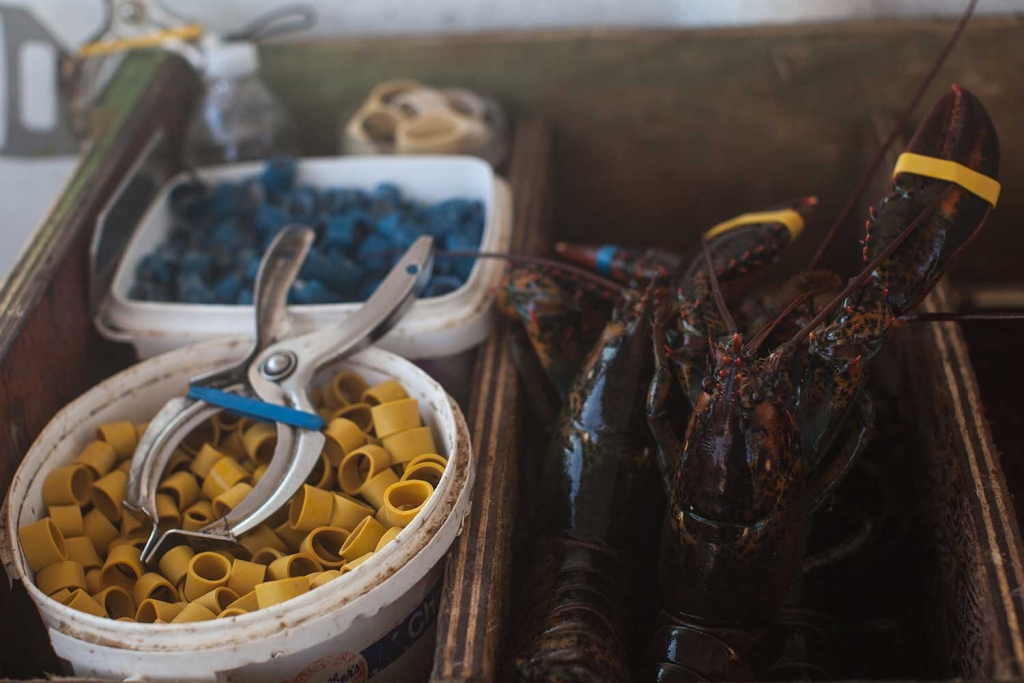
You just need to listen to him talk about the seafood that he stores with care in large barrels a few metres away from the shore before salting, smoking and canning it.
–
The initiative
The 100 Wild Islands
A grassroots story of conservation.
The 100 Wild Islands is a land conservancy project driven by the Nova Scotia Nature Trust, on the coasts of Nova Scotia (Canada). The preservation of this group of wild and ecologically rich islands has gained much support from local residents who want to protect the archipelago they have built their lives around from unwanted development. BESIDE interviewed some of its key protagonists.
We meet with Brian Murphy, a local captain and camping operator hoping to see ecotourism become the region’s leading industry. We speak with lobster fishers Jeannie and Mike Hubley, who campaign against the introduction of corporate open net-pen salmon farms. And we discuss the 100 Wild Islands with Bonnie Sutherland, executive director at the Nova Scotia Nature Trust, which has been working with island owners, residents and the government to ensure that these islands stay wild, forever.
These locals all share one common goal: keeping their islands untamed.
The fishers
The Lobster Life
Fishers Jeannie and Mike Hubley campaign to save their home, burdened with complex governmental regulations and encroaching climate change.
TEXT & PHOTOS Catherine Bernier
The sun rises in a hurry over the Nova Scotian waters of Spry Bay. Aboard the Miss Michelle K., the smell of bait in the background is anything but subtle, traps twirl around with remarkable precision, the captain cracks an open smile. Amidst hundreds of wild islands, Jeannie and Mike Hubley carry on doing what they’ve always done: fish Atlantic lobster.

They are only authorized to fish in zones 32 and 31b, which cover eastern Nova Scotia, for two more days. Beyond land registers and numbers, the Eastern Shore area—whose wild beauty remains unknown to city dwellers and tourists—is host to generations of fishermen and women who keep up the tradition. “Thirty-eight years of experience,” proudly states Mike, who took over the family fishing license when he was just 12 years old. “I was fishing after school, because my dad wasn’t allowed to anymore. Sometimes, he’d be found unconscious in the bottom of his boat, because of his diabetes.” After leaving her nursing job because of back problems, Jeannie joined the crew of the Miss Michelle K., named after their daughter, to work with her husband. Clearly, professional fishing is no easy ride—Jeannie and Mike hoist, empty, and bait up to 250 lobster traps per day—but the call of the ocean proves stronger than anything.
The duo favour an eco-sensitive approach, just like every Canadian lobster fisher: simple traps tied to lines, marked with buoys, then hauled up one at a time. This traditional fishing method has little impact on the sea floor and avoids accidentally capturing fish. But it’s physically demanding. Mike reflects: “Again this year, someone bought a license and sold it back a few months later. It’s not for everyone. There’s an incredible amount of work to do on the boat, but outside it too.” When the couple comes ashore, there’s still lots left to do: putting the catch on ice, cutting the fish that will be used as bait, preparing the boat for the next day. “Sometimes I get out on the water at 3 a.m., I go back at 3 p.m., and so on,” he adds. He’d rather give it all he has during the season, since he can never know what future seasons will be like.
Fishers need to deal with inclement weather, regulations, price fluctuations, and the amortization of their losses. “Risks are part of the business,” Mike adds, but it must be said: a lifestyle that revolves around a natural resource managed by a governmental authority, in the context of climate change, requires a lot more than good coping skills.
(…)
“The lobster industry is really important here; it’s the area’s main employer.”
Jeannie tells us.


The Eastern Shore archipelago, with its 250 km (155 miles) of largely untouched shoreline and biodiversity unlike any other in North America, finally caught the eye of investors of all kinds, including hotel and mining companies. For about a dozen years now, a new gold rush has begun, with companies such as Atlantic Gold promising to create more jobs. This development is worrisome, among other reasons because of the risks created by the explosions used to extract gold. They risk releasing large quantities of nitrogen, a gas potentially lethal to fish populations, into the water. More recently, alarmed by an investor’s large-scale real estate and hotel development project, the Nova Scotia Nature Trust mobilized people and private donors to launch the 100 Wild Islands campaign, which led to the protection of 80 per cent of the area within the archipelago.
Yet this success does not guarantee that coastal water will be preserved; in fact, the farmed salmon industry has kept a close eye on it. Since 90 per cent of Atlantic salmon shoals have vanished, namely because of overfishing, the industry is coming up with other means of meeting the ever-increasing demand for salmon, such as establishing salmon farms in coastal waters. This is not only cause for concern for the Hubleys and their community, but it’s also a problem that exists on a national level.





